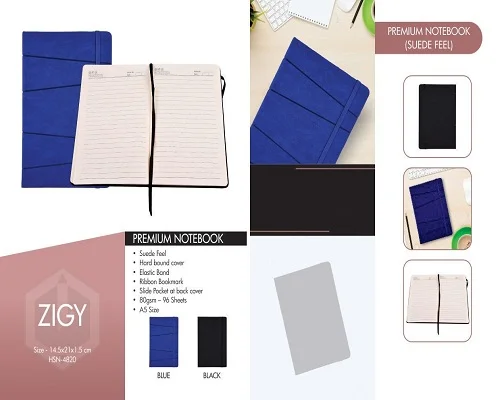Notebook Manufacturers

Notebook Manufacturing: A Comprehensive Overview
Notebook manufacturing is a multifaceted process that involves a blend of traditional craftsmanship and modern technology. This industry has evolved significantly over the years, adapting to changing consumer needs and technological advancements. This article delves into the intricate process of notebook manufacturing, exploring the materials used, the steps involved, and the industry's current trends and challenges.
Materials Used in Notebook Manufacturing
The primary materials used in notebook manufacturing include paper, cover materials, and binding components.
-
Paper: The quality of paper is crucial as it affects the writing experience and durability of the notebook. Common types of paper used include:
- Wood-free paper: This is a high-quality paper that doesn’t contain mechanical wood pulp, making it smoother and more durable.
- Recycled paper: As environmental concerns grow, recycled paper is becoming increasingly popular. It involves reprocessing used paper to create new sheets.
- Specialty paper: This includes papers with specific textures, weights, or finishes, such as glossy, matte, or textured paper for artistic notebooks.
-
Cover Materials: The cover of a notebook can be made from various materials depending on the desired durability and aesthetic. Common cover materials include:
- Cardboard: Used for its sturdiness and ease of customization.
- Plastic: Offers durability and water resistance.
- Leather: Provides a premium look and feel, often used in high-end notebooks.
- Fabric: Used for its aesthetic appeal and unique texture.
-
Binding Components: The binding method affects the notebook's usability and durability. Common binding methods include:
- Saddle-stitching: Staples are used to bind the notebook along the spine.
- Perfect binding: Pages are glued together at the spine, commonly used in softcover books.
- Spiral binding: A plastic or metal coil is used, allowing the notebook to lie flat when open.
- Hardcover binding: Provides maximum durability, often used for journals and planners.
The Manufacturing Process
-
Design and Planning: The process begins with designing the notebook. This involves deciding on the notebook’s size, paper type, cover material, and binding method. Modern manufacturers use computer-aided design (CAD) software to create precise templates and prototypes.
-
Paper Cutting and Printing: Once the design is finalized, large sheets of paper are cut to the desired size. Printing is done using offset or digital printing techniques, depending on the volume and complexity of the design. Printing can include lines, grids, or custom graphics.
-
Cover Preparation: The cover material is cut and prepared separately. If the cover includes custom graphics or text, it is printed or embossed at this stage. For hardcover notebooks, the cardboard is cut, wrapped in the chosen material, and pressed to ensure durability.
-
Binding: The printed paper and cover are assembled and bound together. Each binding method has its specific machinery and processes:
- Saddle-stitching: The pages are folded and stapled along the spine.
- Perfect binding: The pages are collated, and the spine is glued and attached to the cover.
- Spiral binding: Holes are punched along the edge, and the spiral coil is threaded through.
- Hardcover binding: The pages are sewn or glued, then attached to the hard cover using endpapers.
-
Finishing Touches: After binding, additional features such as elastic bands, ribbons, pockets, or pen loops may be added. The notebooks are then inspected for quality, ensuring there are no printing errors, misaligned pages, or binding issues.
-
Packaging and Distribution: The finished notebooks are packaged and prepared for shipment. Packaging can range from simple shrink-wrap to custom-designed boxes, depending on the market segment and customer requirements.
Trends and Challenges in Notebook Manufacturing
-
Sustainability: With increasing environmental awareness, there is a growing demand for sustainable and eco-friendly notebooks. Manufacturers are adopting recycled paper, biodegradable materials, and eco-friendly inks. Additionally, some companies are implementing carbon-neutral production processes.
-
Customization: Consumers increasingly seek personalized products. Advances in digital printing and online ordering systems allow manufacturers to offer customized notebooks, where customers can choose the cover design, paper type, and even add personal text or images.
-
Technological Integration: The rise of digital note-taking devices poses a challenge to traditional notebook manufacturers. However, some companies are integrating technology into their products, such as smart notebooks that digitize handwritten notes.
-
Globalization: The notebook manufacturing industry is highly globalized, with production often outsourced to countries with lower labor costs. This has led to competitive pricing but also raises concerns about labor practices and quality control.
Conclusion
Notebook manufacturing is a dynamic industry that balances tradition and innovation. As consumer preferences evolve, manufacturers must adapt to new trends and challenges, from sustainability and customization to technological integration. Despite the rise of digital alternatives, the tactile experience of writing on paper ensures that notebooks remain a beloved and indispensable tool for many.
